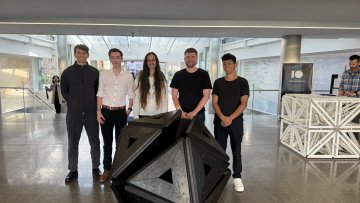Artificial Intelligence (AI) will strongly determine our future prosperity and well-being. Due to its generic nature, AI will have an impact on all sciences and business sectors, our private lives and society as a whole. AI is pre-eminently a multidisciplinary technology that connects scientists from a wide variety of research areas, from behavioural science and ethics to mathematics and computer science.
Without downplaying the importance of that variety, it is apparent that mathematics can and should play an active role. All the more so as, alongside the successes of AI, also critical voices are increasingly heard. As Robert Dijkgraaf (former director of the Princeton Institute of Advanced Studies) observed in May 2019: ”Artificial intelligence is in its adolescent phase, characterised by trial and error, self-aggrandisement, credulity and lack of systematic understanding.” Mathematics can contribute to the much-needed systematic understanding of AI, for example, greatly improving reliability and robustness of AI algorithms, understanding the operation and sensitivity of networks, reducing the need for abundant data sets, or incorporating physical properties into neural networks needed for super-fast and accurate simulations in the context of digital twinning.
Mathematicians absolutely recognize the potential of artificial intelligence, machine learning and (deep) neural networks for future developments in science, technology and industry. At the same time, a sound mathematical treatment is essential for all aspects of artificial intelligence, including imaging, speech recognition, analysis of texts or autonomous driving, implying it is essential to involve mathematicians in all these areas. In this presentation, we highlight the role of mathematics as a key enabling technology within the emerging field of scientific machine learning. Or, as I always say: ”Real intelligence is needed to make artificial intelligence work.”


